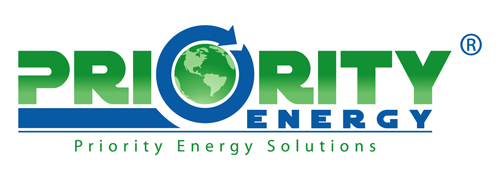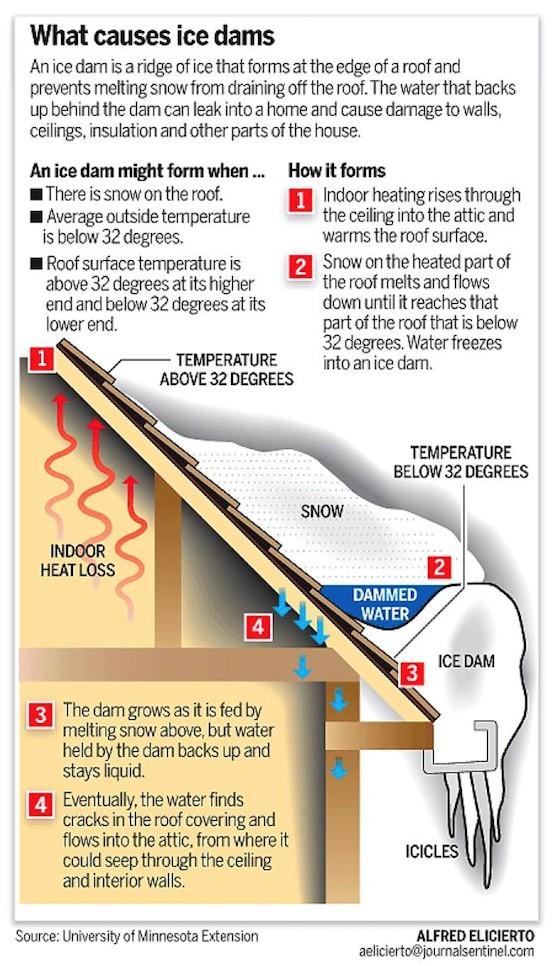- Energy Code Assistance
- Energy Code Facts
- IECC Blower Door Test
- Illinois Blower Door Test Results
- Addison Blower Door Test Results | Air Leakage Testing | Energy Code Testing
- Antioch Blower Door Test Results | Air Leakage Testing | Energy Code Testing
- Arlington Heights, IL Blower Door Test Results I IECC Code Verification
- Barrington Blower Door Test Results | Air Leakage Testing | Energy Code Testing
- Barrington Hills Blower Door Test Results I Illinois Energy Code Tests
- Beach Park Blower Door Test Results | Air Leakage Testing | Energy Code Testing
- Bloomingdale Blower Door Test Results | Air Leakage Testing | Energy Code Testing
- Brookfield Blower Door Test Results | Air Leakage Testing | Energy Code Testing
- Chicago Blower Door Tests | Illinois Energy Code Testing
- Clarendon Hills Blower Door Tests | Clarendon Hills Energy Conservation Code Testing
- Deerfield, IL Blower Door Tests I IECC Verification
- Desplaines Blower Door Tests | Air Leakage Testing | Energy Code Testing
- Downers Grove Blower Door Test Results I Illinois Energy Code Tests
- Elk Grove Blower Door Test Results | Air Leakage Testing | Energy Code Testing
- Elmhurst Blower Door Test
- Glen Ellyn Blower Door Tests | Air Leakage Tests | Illinois Energy Code Testing
- Glencoe, IL Blower Door Tests I IECC Code Compliance
- Glenview Blower Door Test Results | Air Leakage Testing
- Highland Park Blower Door Test Results | Air Leakage Testing | Energy Code Testing
- Hinsdale Blower Door Test Results
- Kenilworth Blower Door Test Results | Air Leakage Testing | Energy Code Testing
- Lake Forest Blower Door Test Results | Air Leakage Testing | Energy Code Testing
- Lake Zurich Blower Door Test Results | Air Leakage Testing | Energy Code Testing
- Lombard Blower Door Testing | Air Leakage Testing Results
- Mount Prospect Blower Door Test Results | Air Leakage Testing | Energy Code Testing
- Naperville Blower Door Test | Illinois Energy Code Testing
- Niles Blower Door Tests | Illinois Energy Code | Air Tightness Testing
- Northbrook Blower Door Test Results | Air Leakage Test
- Oak Brook Blower Door Test Results | Air Leakage Testing | Energy Code Testing
- Palatine Blower Door Test Results | Air Leakage Testing | Energy Code Testing
- Park Ridge Blower Door Test | Illinois Energy Code | Air Tightness Testing
- Skokie, IL Blower Door Tests I IECC Verification
- Vernon Hills Blower Door Test Results | Air Leakage Testing | Energy Code Testing
- Western Springs Blower Door Test Results | Air Leakage Testing | Energy Code Testing
- Wilmette Blower Door Tests | Air Leakage Testing | Illinois Energy Code Testing
- Winnetka Blower Door Results | Air Leakage Testing | Illinois Energy Conservation Code
- Illinois Blower Door Test Results
- IECC Duct Testing
- IECC Energy Modeling
- Energy Code Comparison Charts
- Indoor Air Quality
- Energy Efficiency
- Aeroseal
- Facts & Benefits of Duct Sealing
- Aeroseal for New Construction & Code Compliance
- Aeroseal for Commercial Buildings
- Aeroseal for Existing Homes
- Aeroseal Service Territory | Illinois Leading Aeroseal Dealer
- Addison Aeroseal | Illinois Duct Sealing | Duct Testing
- Arlington Heights Aeroseal | Illinois Duct Sealing | Duct Test
- Barrington Aeroseal | Illinois Duct Sealing | Duct Testing
- Brookfield Aeroseal | Illinois Duct Sealing | Duct Testing
- Chicago Aeroseal | Illinois Duct Sealing | Duct Test
- Clarendon Hills Aeroseal | Illinois Duct Sealing | Duct Testing
- Cook County Aeroseal | Illinois Duct Sealing | Duct Testing
- Deerfield Aeroseal | Illinois Duct Sealing | Duct Tests
- Des Plaines Aeroseal | Illinois Duct Sealing | Duct Testing
- Downers Grove Aeroseal | Illinois Duct Sealing | Duct Testing
- Dupage County Aeroseal | Illinois Duct Sealing | Duct Testing
- Elk Grove Village Aeroseal | Illinois Duct Sealing | Duct Test
- Elmhurst Aeroseal | Illinois Duct Sealing | Duct Tests
- Evanston Aeroseal | Illinois Duct Sealing | Duct Testing
- Glen Ellyn Aeroseal | Illinois Duct Sealing | Duct Testing
- Glenview Aeroseal | Illinois Duct Sealing | Duct Sealing & Testing
- Highland Park Aeroseal | Illinois Duct Sealing | Duct Tests
- Hinsdale Aeroseal | Illinois Duct Sealing | Duct Testing
- Kenilworth Aeroseal | Illinois Duct Sealing | Duct Testing
- Lake County Aeroseal | Illinois Duct Sealing | Duct Testing
- Lake Forest Aeroseal | Illinois Duct Sealing | Duct Testing
- Lake Zurich Aeroseal | Illinois Duct Sealing | Duct Testing
- Lombard Aeroseal | Illinois Duct Sealing | Duct Testing
- Mt. Prospect Aeroseal | Illinois Duct Sealing | Duct Testing
- Naperville Aeroseal | Illinois Duct Sealing | Duct System Testing & Sealing
- Niles Aeroseal | Illinois Duct Sealing | Duct Leakage Testing
- Northbrook Aeroseal | Illinois Duct Sealing | Duct Testing
- Northfield Aeroseal | Illinois Duct Sealing | Duct Testing
- Oakbrook Aeroseal | Illinois Duct Sealing | Duct Testing
- Oakpark Aeroseal | Illinois Duct Sealing | Duct Testing
- Orland Park Aeroseal | Illinois Duct Sealing | Duct Testing
- Palatine Aeroseal | Illinois Duct Sealing | Duct Tests
- Park Ridge Aeroseal | Illinois Duct Sealing | Duct Tests
- Schaumburg Aeroseal | Illinois Duct Sealing | Duct Tests
- Vernon Hills Aeroseal | Illinois Duct Sealing | Duct Testing
- Western Springs Aeroseal | Illinois Duct Sealing | Duct Testing
- Wilmette Aeroseal | Illinois Duct Sealing| Duct Sealing & Testing
- Winnetka Aeroseal | Illinois Duct Sealing | Duct Testing
- The Cost of Duct Leakage
- HVAC Design & Testing
- HVAC Residential Design, Test & Balance
- HVAC Commercial Design, Test & Balance
- Ventilation Systems Defined
- Commercial Client List
- HVAC Sizing Territory | Mechanical Sizing | Test and Balance
- Addison Test & Balance | Mechanical Sizing | ACCA Manual J
- Arlington Heights Test & Balance | Mechanical Design | ACCA Manual J
- Barrington IL Test & Balance | Mechanical Sizing | ACCA Manual J
- Brookfield Test and Balance | Mechanical Sizing | ACCA Manual J
- Chicago Test & Balance | Mechanical Design | ACCA Manual J
- Claredon Hills Mechanical Sizing | ACCA Manual J Loads | Test and Balance
- Cook County Mechanical Sizing | ACCA Manual J Loads | Test and Balance
- Deerfield Mechanical Sizing | ACCA Manual J Loads | Test and Balance
- Des Plaines Mechanical Sizing | ACCA Manual J Loads | Test and Balance
- Downers Grove Mechanical Sizing | ACCA Manual J Loads | Test and Balance
- Dupage County Mechanical Sizing | ACCA Manual J Loads | Test and Balance
- Elk Grove Village Mechanical Sizing | ACCA Manual J Loads | Test and Balance
- Elmhurst Mechanical Sizing | ACCA Manual J Load Calcs | Test and Balance
- Evanston Mechanical Sizing | ACCA Manual J Loads | Test and Balance
- Glen Ellyn Mechanical Sizing | ACCA Manual J Loads | Test and Balance
- Glenview Mechanical Sizing | ACCA Manual J Loads | Test and Balance
- Highland Park Mechanical Sizing | ACCA Manual J Loads | Test and Balance
- Hinsdale Mechanical Sizing | ACCA Manual J Loads | Test and Balance
- Kenilworth Mechanical Sizing | ACCA Manual J Loads | Test and Balance
- Lake County Mechanical Sizing | ACCA Manual J Loads | Test and Balance
- Lake Forest IL Test & Balance | Mechanical Sizing | ACCA Manual J
- Lake Zurich Test & Balance | Mechanical Sizing | ACCA Manual J
- Lombard Test & Balance | Mechanical Sizing | ACCA Manual J
- Mount Prospect Test & Balance | Mechanical Sizing | ACCA Manual J
- Naperville Test & Balance | Mechanical Sizing | ACCA Manual J
- Niles Test & Balance | Mechanical Sizing | ACCA Manual J
- Northbrook Test & Balance | Mechanical Sizing | ACCA Manual J
- Northfield Test & Balance | Mechanical Sizing | ACCA Manual J
- Oakbrook Test & Balance | Mechanical Sizing | ACCA Manual J
- Oakpark Test & Balance | Mechanical Sizing | ACCA Manual J
- Orland Park Test & Balance | Mechanical Sizing | ACCA Manual J
- Palatine Test & Balance | Mechanical Sizing | ACCA Manual J
- Park Ridge Mechanical Sizing | ACCA Manual J Load Calcs | Test and Balance
- Schaumburg Test & Balance | Mechanical Sizing | ACCA Manual J
- Building Science Training
Over the past few weeks weeks it has been troubling to see (and hear) neighbors chipping away at ice dams on their roofs. It’s the talk of the block; water leaks, gutters breaking, ceiling damage…all because of large amounts of ice that have accumulated along the eaves and overhangs of people’s homes. However, the home pictured here has everyone impressed because while others are raking their roofs this home has neither an icicle nor an ice dam. Why not?
Let’s start by reviewing why and how ice dams are formed. Heat rising from the attic will melt the snow resting on the roof, and water will roll down the slope and begin to pool at the eaves. Since the eaves are cooler, usually below 32 degrees, the water freezes in this area. As the water melts, drips and refreezes it creates layers of ice that form a dam, which blocks the normal runoff of water. (See the diagram by UMN)
The main reason the snow melts and freezes in this way is due to a warm attic and air leakage. Building scientists have been preaching about better air sealing and weatherization practices in homes for years. You want the warm air to stay in the living areas, not rise and leak into the attic. You also want to properly ventilate and insulate to keep the air temperature in the attic and roof cool and even.
This 2-year-old home is proof of how a properly designed and built home will not have air leaks and heat loss. The builder of this home brought in Priority Energy to 1) design the heating, cooling and ventilation system and 2) verify air sealing, insulation levels, and air tightness throughout the building process. We see here one example of how the combination of accurate design and testing ensures a durable, energy efficient and safe structure.
If your home is prone to ice dams, try to clear the snow from the eaves as soon as you see it accumulating. Consider putting a fan in the attic if there aren’t any vents present as this will help tp keep the attic temperature cool and more even. Take photos of where the ice dams developed and get an energy auditor to investigate the areas where the damming developed. Ventilation, insulation, and air sealing can prevent the destructive effects of ice dams and will also improve comfort, energy efficiency and indoor air quality.
Priority Energy has worked with the builder of this Glen Ellyn home for many years and has helped them create over fifty high performance homes in the Chicago area. If you are a builder or if you are thinking about building, be sure to get help from a building science firm. If you would like to improve the performance an existing home, an energy audit by a certified energy auditor is a good place to start. .

